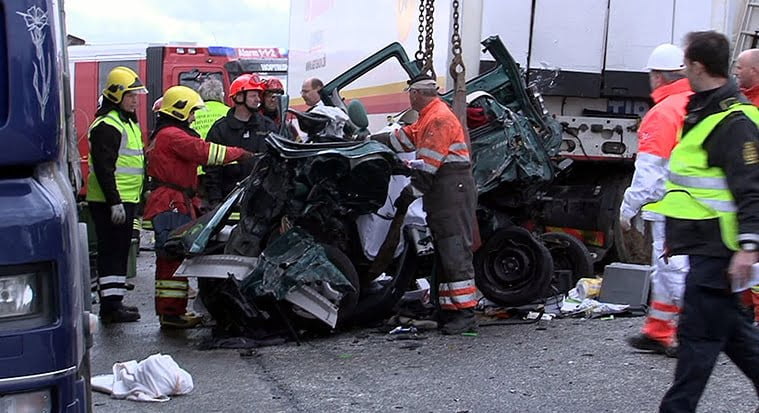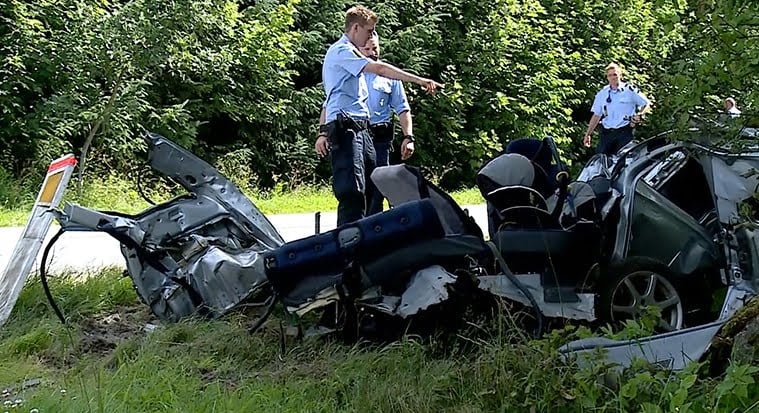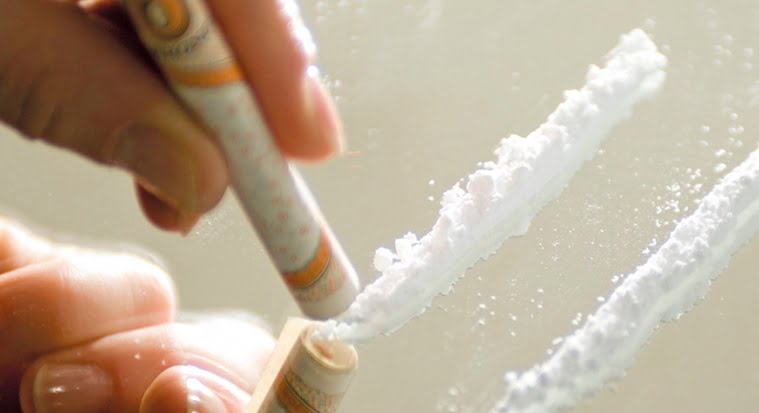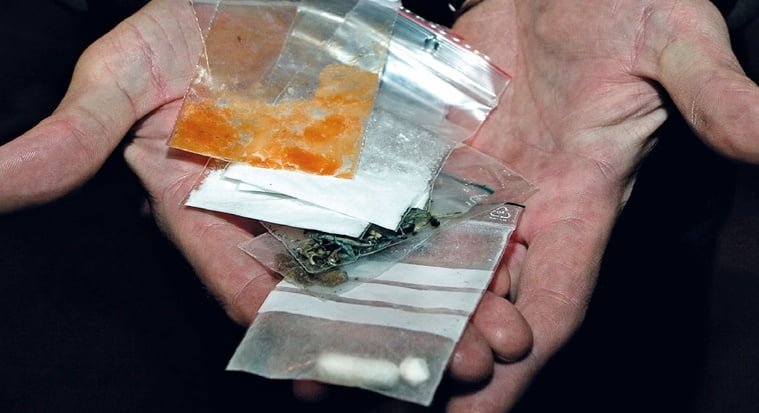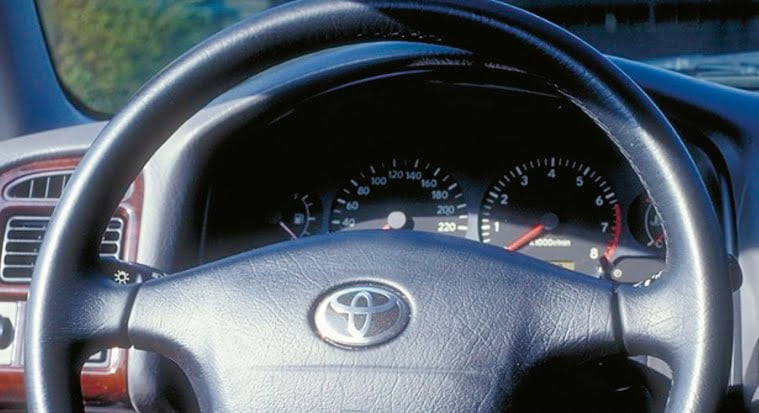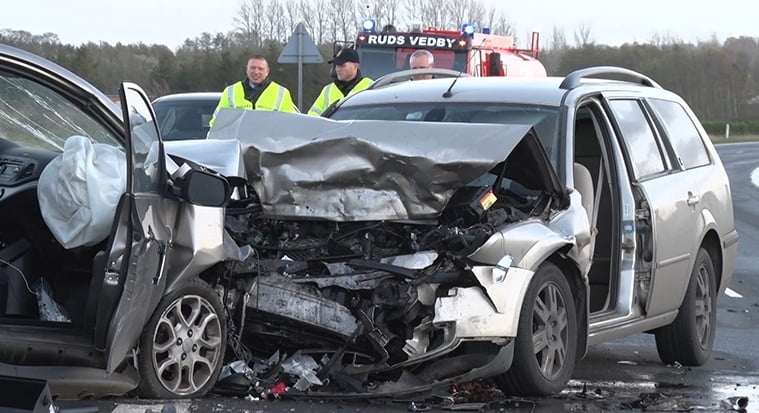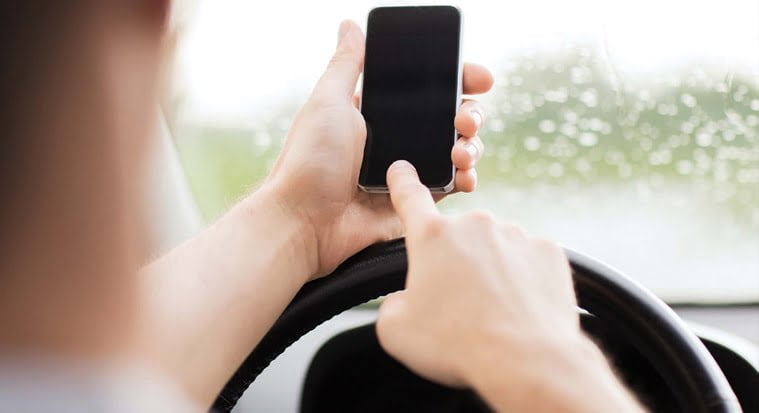Passenger car
Driving school
theory book
to category B
Sections 8.1 - 8.2: Special risk conditions in traffic
Alcohol as a factor in accidents and injuries
- Alcohol is responsible for approximately one in four road deaths and one in six injuries.
- Drinking and driving significantly increases the risk of accidents, especially for young drivers.
- 18-24 year old drivers have an accident risk that is about 10 times higher than a 50+ year old with the same blood alcohol level.
Below you can see some indicative figures for how much alcohol and what blood alcohol level you get from different drinks:
Note that this is for a 70-75kg man. If you weigh less, you will have a higher BAC. The numbers can vary greatly from person to person - so if you're in the slightest bit of doubt, don't drive!
In the table below, you can see the influence of the blood alcohol level:
At a blood alcohol level of:
0.2 - The eye's ability to quickly focus and adjust from light to dark is impaired.
0.5 - The ability to perceive situations while performing precise movements is impaired. In addition, the field of vision narrows.
0.8 - Impaired coordination and increased reaction time.
1.0 - Attention and concentration are impaired, with the onset of fatigue symptoms and impaired balance and mobility.
1.5 - Severely impaired mobility and speech impairment.
2.0 - Strong symptoms of intoxication and self-control is completely lost.
Above 3.0 - Risk of unconsciousness and danger to life.
- The blood alcohol level will increase 30-90 minutes after you have drunk the last drink.
- The metabolism doesn't really kick in until about 45 minutes after you start drinking alcohol.
- The body's ability to metabolise alcohol is highly individual. The metabolism depends first and foremost on the person's weight and gender, but also on the contents of the stomach, the metabolic capacity of the liver, muscle mass, etc. As a rule of thumb, it takes a 60kg person 1½ - 2 hours to burn an object.
- One item is 12 grams (1.5 cl.) of pure alcohol. This equates to approx:
a) 1 pilsner (33 cl.).
b) 1 glass of wine (12 cl.).
c) 1 glass of fortified wine (8 cl.).
d) 1 glass of spirit (4 cl.).
- A blood alcohol level of 0.5-0.8 increases the risk of an accident by up to 10 times.
- A blood alcohol level of 0.8-1.2 increases the risk of an accident by up to 30 times.
- A blood alcohol level above 1.2 increases the risk of an accident by up to 200 times.
- Police have effective tools to detect alcohol consumption.
- The risk of an accident increases on journeys to and from parties where there are more young people of the same age in the car.
- It is very difficult to assess alcohol metabolism and know when you can drive after drinking.
- If you've had a lot to drink the night before, your blood alcohol level may still be too high to drive the next day.
- You can't increase the metabolism of alcohol. Not through physical activity, sleep, coffee or any other way.
- You must not drive with a blood alcohol level of more than 0.5 or more than 0.25 mg per litre of breath (drink-driving).
- If you want to drink, leave the car parked. Agree who will stay sober to drive, stay overnight or similar.
- Don't be pressurised by others to drink and drive.
- As a passenger, you should always make sure that the driver is not drink-driving. As a passenger in a car driven by a drunk driver, compensation to the passenger may be reduced due to the passenger's possible negligence.
- You should take action against someone else's drink-driving.
- First-time licence holders - the holder of either a motorcycle or car licence - will be banned from driving within the first three years if their blood alcohol level is 0.51-1.2 (equivalent to 0.25-0.60 mg per litre of air).
- If your blood alcohol level is above 1.2 (equivalent to more than 0.60 mg per litre of air), your driving licence will be suspended unconditionally.
Drugs as an accident and injury factor
- Drugs in the blood significantly increase the risk of accidents.
- Cannabis increases accident risk by up to 3 times.
- Cocaine and heroin increase accident risk by up to 10 times.
- Amphetamines increase accident risk by up to 30 times.
- Narcotic drugs work in different ways. Some drugs have a sedative effect, others are stimulants and some cause hallucinations.
- If you consume different narcotics or mix narcotics with alcohol, the effects may be unpredictable, but the risk of an accident will be greatly increased in any case.
Different types of narcotics have the following impact on road safety:
Stimulants Increases activity levels. You don't feel tired and have increased risk-taking behaviour, such as taking risks and making errors in judgement, resulting in an increased risk of traffic accidents. The most common stimulants are:
- Amphetamine (speed).
- Cocaine.
- Ecstasy and a number of synthetically produced intoxicants, so-called designer drugs. Some of these can also cause hallucinations.
Blunt substances leads to impaired attention, coordination and reaction speed, which increases the risk of road accidents.
The most commonly used sedatives are:
- Cannabis (hash, marijuana, pot).
- Heroin, morphine, methadone (opioids).
- Other strong painkillers.
- Sleeping and nerve medication (benzodiazepines such as stesolid).
- GHB (fantasy).
Substances that cause hallucinations, causing a distorted perception of reality, which increases the risk of road accidents. Examples of drugs that cause hallucinations are:
- LSD.
- Certain designer drugs.
- Certain mushrooms and cacti.
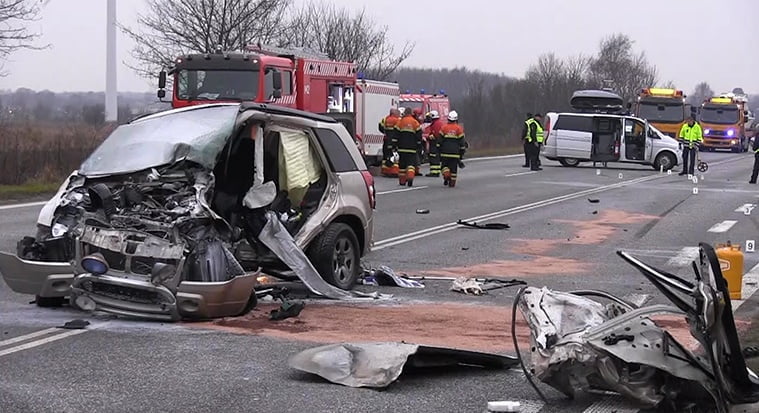
You should prevent others from driving under the influence of drugs. You should not be pressurised by others to drive under the influence of drugs As a passenger, you should always ensure that the driver is not under the influence of drugs You should take action against others driving under the influence of drugs.
Speed as an accident and injury factor
- Speed is estimated to be an accident and injury factor in between 25 and 50% of the accidents with personal injury.
- Men aged 18-19 are 2-3 times more likely to have an accident than women of the same age. Speed is more often a factor in young men's accidents than in young women's.
- If you increase your speed by 10 km/h, you also increase the risk of a fatal accident by up to approximately 45% and an injury accident by approximately 20%.
- Braking distance increases four times when you double the speed.
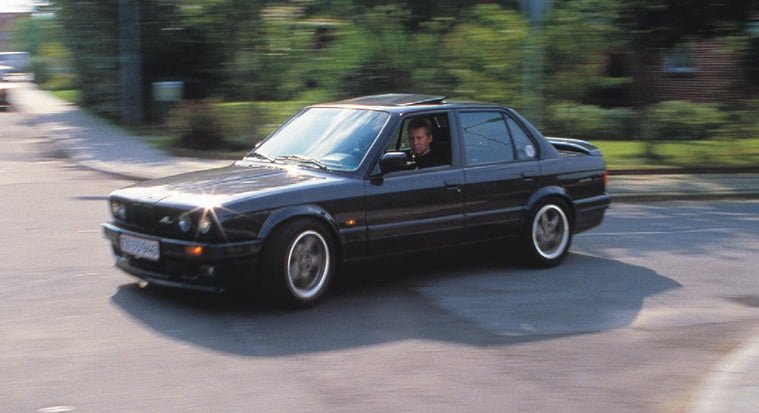
- When two cars travelling at 50 and 60 km/h brake at the same time, the 60 km/h car is still travelling at 44 km/h where the 50 km/h car stops.
- The most serious accidents where speed is a significant accident and injury factor occur in rural areas.
- At a collision speed of 30 km/h, 2 out of 10 pedestrians die, at 50 km/h 4 out of 10 die and at 60 km/h 7 out of 10 die.
- Speed is a significant accident and injury factor in road accidents involving personal injury.
- Speed is often a decisive factor in determining the severity of an accident triggered by your own or other road users' mistakes.
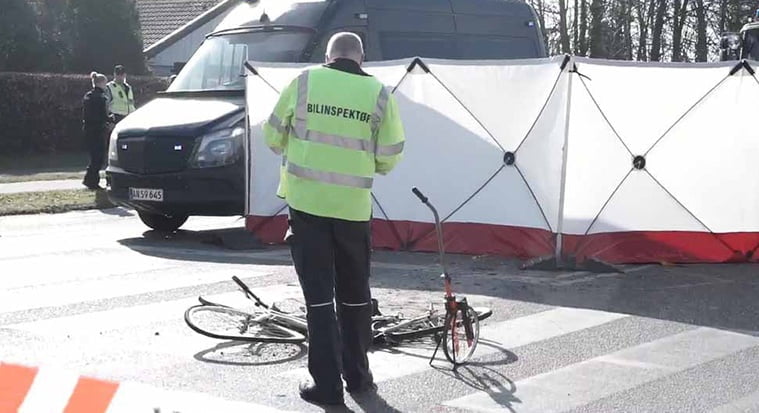
- A pedestrian's risk of death from being hit by a car increases significantly even with small increases in speed.
- Speeding accidents are particularly common when travelling to and from parties at the weekend with several young people of the same age in the car.
- You must always obey the speed limits.
- Driving at particularly high speeds will result in an unconditional disqualification.
- If you have driven at a speed of 200 km/h or more, or driven at a speed of more than 100 km/h and exceeded the speed limit by more than 100%, you will be disqualified from driving unconditionally.
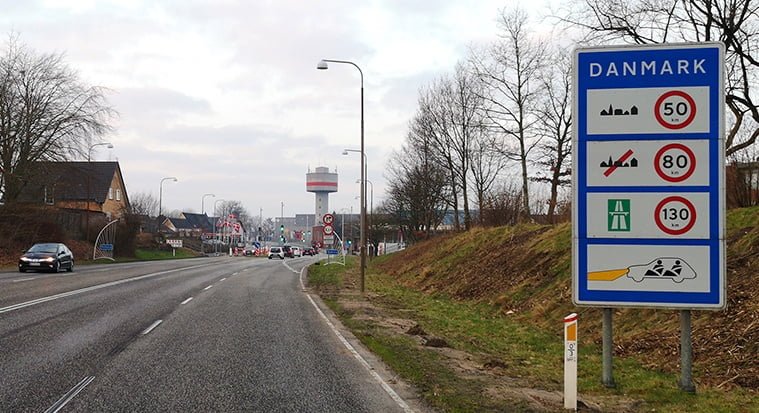
- If you exceed the speed limit by more than 30 %, you will get 1 point on your driving licence.
- For the first 3 years, first-time motorcycle or car licence holders only need 2 points on their licence to be banned from driving.
- First-time learner drivers are banned from driving if they exceed 60% or drive at 160 km/h or more on motorways. For non-first-time drivers, a similar offence will result in a conditional driving disqualification.
- You can avoid almost all typical accidents where speed is a key factor in accident and injury risk by following these tips:
a) Observe the speed limits.
b) Reduce speed if conditions do not allow driving at the maximum permitted speed.
c) Never be influenced by others to break the speed limit.
d) Make the driver aware if the speed limit is exceeded.
Non-use of seat belts as an injury factor
- The risk of being killed is about 10 times higher if you are thrown out of the car than if you stay in the car.
- Seat belts increase the chances of surviving an accident by approximately 50% for front seat occupants and approximately 25% for rear seat occupants.
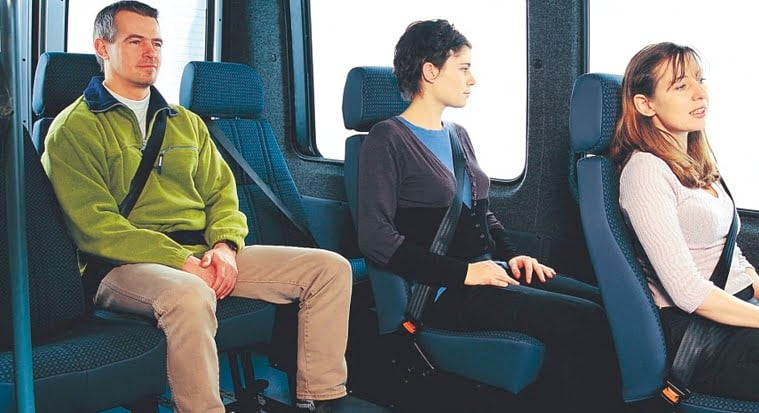
For example, if you weigh 75 kg and drive into a wall at 50 km/h, you need to withstand a pressure of about 1.5 tonnes if you want to stay in the car. Even at speeds of 10 km/h, you can't resist without a seatbelt.

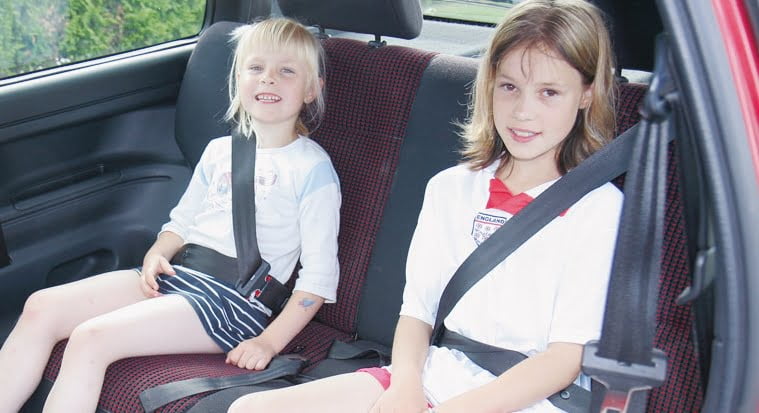
- Many accidents happen when driving at relatively low speeds. This is another area where seat belts can make the difference between being seriously injured - or escaping unharmed.
- 18-24 year old drivers involved in accidents use seat belts less than experienced drivers involved in accidents.
- The risk of an accident increases on journeys to and from parties with many young peers in the car. On such trips, the propensity to not wear a seatbelt increases.
- 18-24 year old drivers are more often than others involved in accidents where the car rolls over and the risk of ejection is high. In these accidents, the use of seat belts has a particularly high impact.
- Your car's airbag can be downright deadly when you're not wearing a seatbelt.
- If you're not buckled up, you'll often be thrown around the car in an accident. This puts you at a very high risk of injuring yourself and others in the car.
- You should always make sure that everyone in the car is wearing a seatbelt.
- You will receive a suspension of your licence if passengers under the age of 15 do not wear a seatbelt while driving. Two points will result in a driving ban for first-time licence holders within the first 3 years.
You can avoid almost all typical injuries caused by not wearing a seatbelt by following these tips:
Inattention is a contributing factor in about one third of accidents in Denmark. Drivers engage in distracting behaviour for about one third of the time behind the wheel and about two thirds of the causes of inattention are found inside the car, i.e. they are most often factors within the driver's control. Lack of attention, misperception and misjudgement play a significant role in many road accidents.
A road-safe attitude and behaviour is best developed through knowledge of one's own limitations and a healthy scepticism about the reliability of what one perceives on the road. A road-safe attitude and behaviour is strengthened by counterbalancing one's own limitations by adopting a driving style that provides an ample safety margin during various manoeuvres. Distraction occurs when the driver does something that takes attention away from driving. Typical everyday activities such as finding things in the glove compartment, reading maps, eating and drinking or talking to a passenger distract the driver from the traffic. Other distracting elements include multimedia devices (radio/CD/DVD), GPS and smartphones. It is not the presence of these per se that is the problem, but rather the driver's operation of them while driving. The equipment should be operated by a passenger or when the car is stationary.
An unbalanced state of mind due to high levels of excitement, sadness, worry or similar is also a major distraction. As a driver, you should show restraint and have the energy to help other road users, even if they make mistakes. As some vehicles need a lot of space to perform certain manoeuvres such as turning, reversing and the like, you should give them the space they need, even if they are the ones legally obliged to do so. You should also keep an extra safe distance from drivers in front who appear unsafe or inexperienced and maintain an appropriately low speed during roadworks, especially where road workers are on the carriageway or in the immediate vicinity, and keep a safe distance from them. Refrain from using abusive words/expressions or gestures towards other road users, as this rarely has a positive effect on traffic flow.
Especially just after getting your licence, a critical assessment of your strengths and weaknesses as a driver helps you gain insight into your driving skills and you should adapt your driving to the car's design, equipment, maintenance, condition and loading, as well as road and weather conditions.
You must take responsibility and the necessary precautions for given situations in traffic and co-operate with others in traffic in accordance with your driving skills.
Furthermore, a motor vehicle shall not be driven or attempted to be driven by any person who, by reason of illness, infirmity, overexertion, lack of sleep, the influence of stimulants or anaesthetics or for similar reasons, is in such a condition that he or she is unable to drive the vehicle in a fully safe manner.
Test your knowledge
Cat. B - Sections 8.1 - 8.2
Select the questions you think are the right ones.





